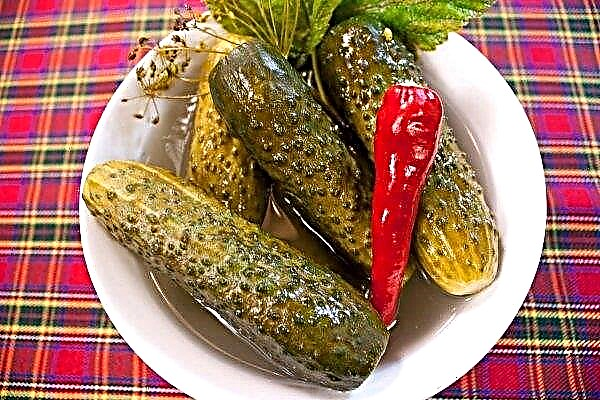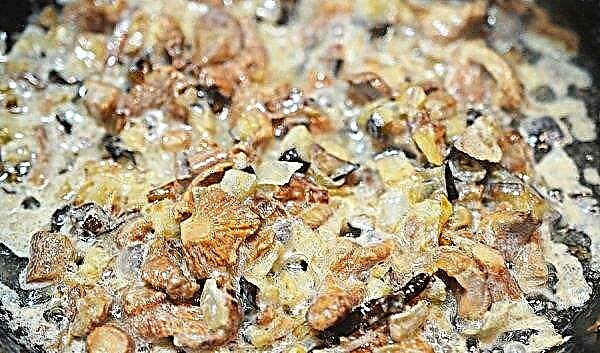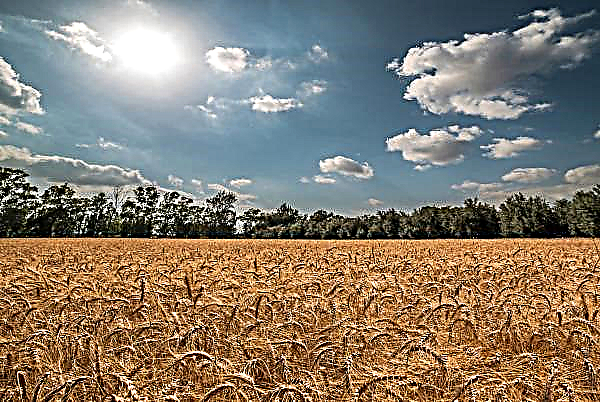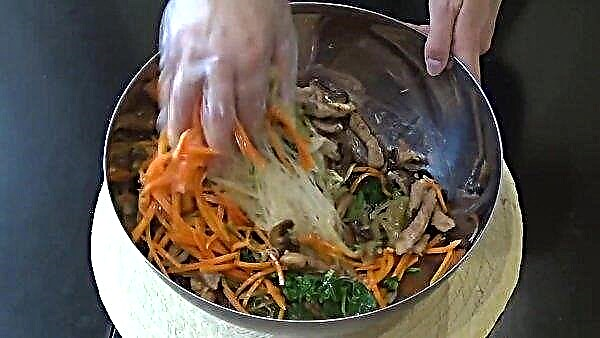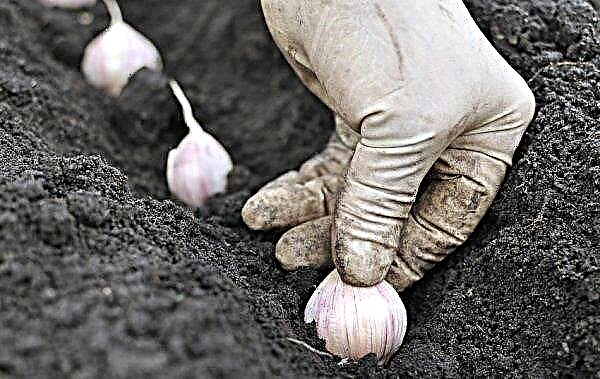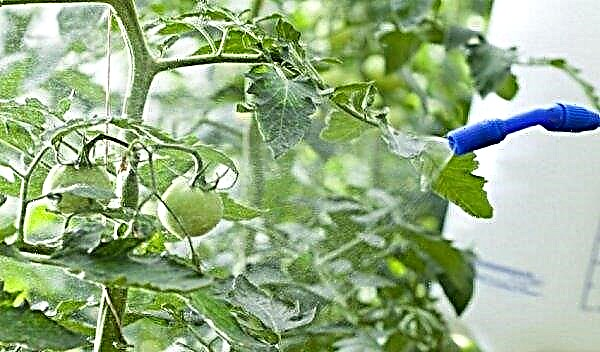Despite the size and strength of animals related to cattle, they are susceptible to many diseases. Especially a lot of problems appear during grazing in warm time in open areas. One of the most dangerous is the penetration of gadfly larvae under the skin. Consider what constitutes a disease and how to get rid of it.
What is this disease
Cattle hypodermatosis is a disease that occurs due to the impact on the skin of cattle of larvae of the gadfly. The result is the appearance of inflammation, intoxication of the body and a decrease in animal productivity.
Did you know? The most expensive meat in the world is marbled beef obtained from Wagiu cows. They are grown exclusively in Japan, communicate with them respectfully, fed only with selected herbs and daily drunk with beer.
Pathogen and development cycle
The causative agents of the disease are gadflies - insects that look like a bumblebee. A body about 2 cm long is covered with thick hairs, mostly dark, but in some places a yellowish-red hue. The head is narrow in shape, the wings are wide, light smoky, claws are present on the legs. Adult individuals (adults) live about 10 days, and at a low temperature - 28 days. Immediately after mating, the females search for an animal to lay eggs. From 450 to 800 eggs can be laid at a time (they have an oblong-oval shape, up to 1 mm long). The female attaches them to each hairline on the body of the donor. After maturation and hatching, the larvae seep through the skin, heading (depending on the species) into the spinal canal or submucosal layer of the esophagus.
Immediately after mating, the females search for an animal to lay eggs. From 450 to 800 eggs can be laid at a time (they have an oblong-oval shape, up to 1 mm long). The female attaches them to each hairline on the body of the donor. After maturation and hatching, the larvae seep through the skin, heading (depending on the species) into the spinal canal or submucosal layer of the esophagus.
In these places they live up to 6 months. After their movement occurs towards the lower back, where the connecting capsules are formed. At this time, experiencing the need for oxygen, they make fistulous openings. After reaching the 3rd stage of development, the larvae go outside and pupate. Before the formation of an adult insect, ready to lay eggs, about 40 days pass.
Important! Parasites at the 3rd stage lead to swelling of tissue structures and blood coagulation. Ways of their movement appear in the form of dirty green moves.
Symptoms
The approach of animal gadflies is palpable, at which time they become restless and can even run away from the place of grazing. In addition, during infection in cattle, the following symptoms begin to appear:
- the appearance of itching;
- subcutaneous tissue edema;
- pain on palpation;
- decrease in gain in live weight;
- reduction in milk yield;
- tissue injury along the path of movement of the larvae;
- the development of inflammation on the skin;
- the formation of dense tubercles with small holes;
- the release of serous fluid from fistulous openings;
- ruptures of blood vessels;
- paralysis of the limbs;
- the appearance of gadfly nodules.

Diagnostics
Unfortunately, for a long period of time, the disease is practically asymptomatic, while clinical manifestations are noticeable only at the stage of larval movement. However, despite this, the detection of hypodermatosis at an early stage is important for easier treatment, which can save the animal from the parasite without pathological consequences.
Diagnosis consists in periodical thorough inspection of animals from the beginning of spring to autumn. At this time, it is necessary to carry out mandatory palpation of the back, neck and sacrum. The detection of any abnormalities and confirmation of the diagnosis should be agreed with an experienced veterinarian.
Did you know? Though sense of smell cows are worse than other animals, they will not start eating until they sniff the place. If fertilizers or something else were scattered on the site, they will refuse to eat.
Pathological changes
After opening the dead animal, the first, most characteristic changes are found in the subcutaneous tissue. In addition, hard capsules from connective tissue are found in the muscle and subcutaneous layer, as well as fistulous passages and larvae. The main site of inflammation is pronounced due to the swelling of the surrounding tissues.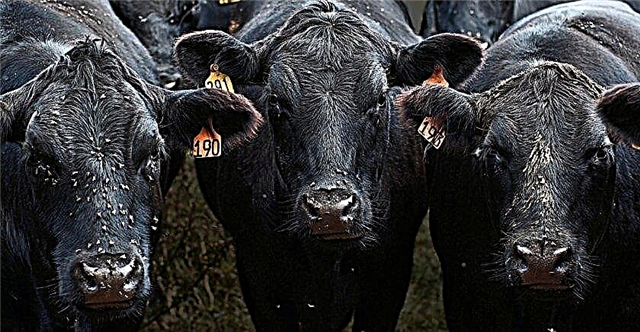
Treatment
Therapy in the early stages is carried out using chemicals. The key to successful treatment is the accurate identification of the location of larvae. Processing is carried out in the fall, during the greatest activity of adult gadfly.
Important! The best results in the fight show antibiotics based on avermectin. Their action leads to the death of 98% of the larvae of the gadfly.
To do this, use the following tools:
- Hypodermine. Apply gently to the skin along the spine. The dosage is used at the rate of 7 ml per 100 kg of mass.
- Ivomek. Enter subcutaneously once a season. Calculation of the dose is carried out according to the formula 0.2 mg per 1 kg of weight.
- Estrosol. Used for group spraying. The amount of the drug is 60 mg per 1 m3.
 For drug treatment, drugs of the organophosphorus group are used:
For drug treatment, drugs of the organophosphorus group are used:- Fenthion;
- Chlorophos;
- Diocaphos.
Prevention
To avoid cattle infection, you need to adhere to the following simple recommendations:
- Do not graze an animal with the last stage of hypodermatosis in a common pasture.
- Distribute grazing time. In hot weather, minimize it, and in normal weather, do not limit it.
- Once a month, treat livestock with peritroid preparations, introducing under the skin such products as Ivomek or Aversect.
- Before moving to summer maintenance, process the entire population.
 As can be seen from the above, subcutaneous gadfly is quite dangerous for cows, especially in the absence of preventive measures. If you do not want to incur losses and even lose your herd, you need to know the symptoms of cattle hypodermatosis and treatment methods in the early stages.
As can be seen from the above, subcutaneous gadfly is quite dangerous for cows, especially in the absence of preventive measures. If you do not want to incur losses and even lose your herd, you need to know the symptoms of cattle hypodermatosis and treatment methods in the early stages.

